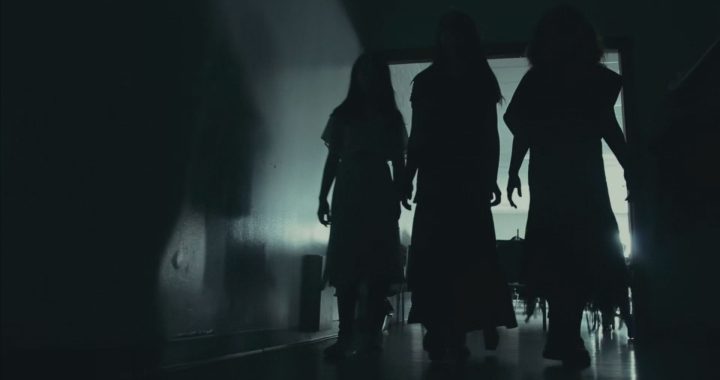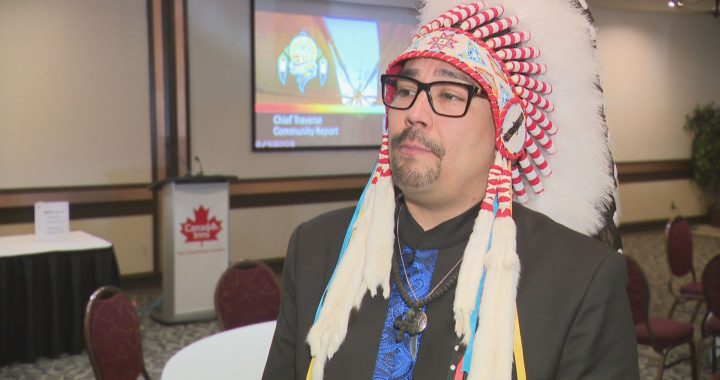Ottawa fears admission it purposely destroyed Indian residential school files would lead to court fights: documents
Despite holding evidence to the contrary within its archival vaults, the federal government refuses to admit it purposely destroyed Indian residential school documents fearing it could face additional legal action, internal government records show.
By Jorge Barrera
APTN National News
Despite holding evidence to the contrary within its archival vaults, the federal government refuses to admit it purposely destroyed Indian residential school documents, fearing it could face additional legal action, internal government records show.
Indian residential school documents were pulped and incinerated as a result of three major rounds of government-wide document destruction directives issued between 1936 and 1973.
Yet, the federal government maintains that no residential school documents were ever purposely destroyed, but fell victim to floods and fires at the schools, according to an Aboriginal Affairs analysis obtained by the National Residential School Survivors’ Society through the Access to Information Act.
“The government of Canada has taken the position that there was no deliberate destruction of student records and residential school documents and that documents were destroyed as a result of institutions that burnt down or were flooded,” says a departmental analysis from 2009. “The admission of the deliberate destruction of student records and documents might spur further legal action against the government of Canada.”
The analysis was triggered by a report from the National Residential School Survivors’ Society, formed in 2003 to speak on behalf of residential school survivors, which took issue with the missing paper trails that left many residential school survivors receiving far less in compensation than they initially claimed because they couldn’t prove how many years they actually attended the school.
Under the multi-billion dollar residential school settlement, $1.9 billion was set aside for “Common Experience Payments” which were based on the number of years former students attended the schools. A separate “Independent Assessment Process” was created to deal with compensation for abuse suffered at the schools.
The society recommended the government adopt a “reverse onus” policy where it would be up to the federal government to prove that the claimants didn’t attend the schools during the claimed years.
The department concluded such a policy was fraught with problems for the department.
“Adopting the ‘reverse onus policy’ would imply that the destruction of documents was deliberately undertaken by the government of Canada,” said the analysis. “Adopting a ‘reverse onus’ policy could have significant legal implications for the department, the Government of Canada, and it could set precedence for legal action against provincial governments and their involvement in their involvement in the administration of provincially run residential and day schools….There is no likelihood that the settlement agreement will be reopened in order to adopt this policy.”
While it remains unclear exactly what impact the loss of the destroyed records will have on the Truth and Reconciliation Commission’s project to reconstruct and preserve the historical record, the ramifications have already been felt by residential school survivors under the CEP.
According to Aboriginal Affairs’ own data, as of March 25, 51,188 residential school survivors have received compensation below what they claimed because their residence at a residential school could not be confirmed. The primary reason for this stems from a lack of existing documents. For example, a residential school survivor may claim they attended a certain school or schools for a number of years, but if only partial documentation exists, they would not be eligible for the full amount they claimed.
The Auditor General of Canada recently found that nearly three years after the TRC and Aboriginal Affairs began the process of finding and transferring historical Indian residential school records, no one knows how much it will cost to gather all the material, who will pay for it or what documents are even “relevant” for the project.
The report found that the TRC and the federal department couldn’t agree on what constituted relevant documents, where to search, what time frames the documents would cover, what formats to use and who could pay for it all.
The TRC’s mandate ends in July 2014.
The Library and Archives Canada estimates that the total cost of gathering historical Indian Residential School documents could hit at least $40 million and take 10 years to find and digitize all the material. The documents are scattered across 24 departments and agencies and, laid side by side, would stretch for about 20 kilometres or fill 69,000 boxes.
However, it appears the existing documents may be the remnants of a far more extensive historical record that has since been pulped or incinerated.
According to a 2006 report from The Shingwauk Project, based out of Algoma University in Sault Ste Marie, Ont., Ottawa purposely destroyed residential school records as part of government-wide purges.
The first round of document destruction occurred in 1936 to free up storage space, according to the report, which is based on archival documents. The then-named Indian Affairs department provided a list of documents it planned to destroy at certain times and which would be preserved. The residential school documents slated to be destroyed after five and 10 years included school returns, monthly reports, diaries, medical accounts, reports of inspectors, accidents and assistance to former students, according to the Shingwauk Project report.
The second round of document destruction came in 1944 as part of an effort to deal with a paper shortage created by the Second World War. The destroyed residential school documents included medical, hospital and drug accounts, monthly reports, diaries, salary pay lists and school returns along with requisitions.
The third round of document destruction came in 1954. The Indian Affairs department created “Records Destruction Teams” which obliterated a number of residential school records, including routine correspondence, memos to council, progress reports, repairs to buildings, all school supply correspondence, all health services correspondence, teacher’s reports, admission and discharge among a host of other documents.
A moratorium on records destruction was put into place in 1973 as a result of an agreement between Public Archives of Canada and Indian Affairs.
@JorgeBarrera










We all know that so much information was destroyed to take away any credibility that we might have with the government and as the past has shown they attempt to discredit our records that have been passed down through the oral traditions. Sadly, I am not surprised that they would want to prevent the public from knowing just how determined they were to remove us. Too bad, they didn’t really understand just how strong and determined our ancestors were to save us!!
this government are a bunch od lying sneaky a holes , what are they hiding , this was sad what they did to the Nativ children & adults , you all should be ashamed , I am ashamed of our so called government, this is why , when things like this happen and gets out, it angers alot of canadains !!!!!!
I suppose the problem there is that the UN failed and continues to fail in its obligations to secure the records necessary to address this Crime Against Humanity visa vie the International Court. I guess crimes against people including Indigenous peoples are OK if you are footing the UN Bill.
That’s the cons for you. They like to keep things hidden, until they blow up in their face. Either start making with the truth, or watch as Canadians’ irritation with corrupt politicians grow into something far worse.